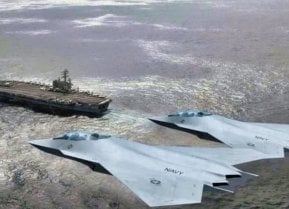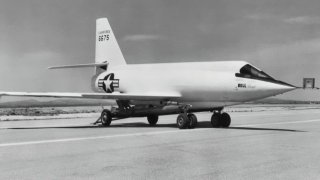The Tragic Fate of the X-2, the First Aircraft to Reach Mach 3
The X-1 was just the beginning of a secret, experimental U.S. aircraft design. The Bell X-2 “Starbuster” soon followed – an airframe designed to research flight characteristics in the Mach 2-3 range.
Numeric designation suggests a lot, and the Bell X-1 was indeed a special aircraft. Chuck Yeager broke the sound barrier in the X-1, and the plane ushered in the modern age of supersonic flight.
The X-1 was just the beginning of secret, experimental U.S. aircraft design. The Bell X-2 “Starbuster” soon followed – an airframe designed to research flight characteristics in the Mach 2-3 range.
The concept was ahead of its time, and designing and building the X-2 was arduous. The jet was meant to fly faster and higher than any jet had ever flown, thus encountering higher temperatures. The Bell team could not rely on existing technologies as it developed the craft’s aerodynamic design and its control systems, as well as the materials that could withstand the X-2’s intended flight profile.
Engineering Challenges for the X-2
Upon reaching speeds in the Mach 2-3 range, a jet would encounter intense heat caused by aerodynamic friction. This is known as the “thermal barrier,” and in order to handle it, the X-2 was constructed from stainless steel and a copper-nickel alloy.
In addition to withstanding high temperatures, the X-2 needed to reach the speeds at which those high temperatures would occur. To this end, the X-2 relied on the XLR25, a two-chambered, liquid-propellant engine that used alcohol and oxygen to provide between 2,500 and 15,000 pounds of thrust. A continuously throttleable control, novel for the time, was used to dictate the engine’s thrust. The system was more precise than the X-1’s engine, whose thrust was dictated in increments by turning its four chambers on or off.
When the X-1 broke the sound barrier, outside observers were quite shocked that an airframe with straight wings had been able to break the threshold. Many believed that straight wings caused too much drag to accelerate beyond the speed of sound. The X-2 ditched the straight wings of its predecessor and adopted the swept-wing configuration many expected would enable supersonic flight.
For flight testing, the X-2 would be dropped from a B-50 Superfortress. The last piston-engine plane Boeing ever built for the U.S. Air Force, the B-50 was a modified version of the B-29. Built with a more powerful Pratt & Whitney R-4360 radial engine, stronger structures, and a taller tail fin, the B-50 was quite capable of hefting the X-2 to sufficient altitudes.
Tragedy at Mach 3
The X-2’s first unpowered glide flight occurred in 1952. After that, the program quickly fell behind schedule – years behind schedule. A powered test flight would not occur until 1955. The results of that test flight, at least, were impressive. The X-2 set a new speed record, reaching Mach-2.87 (1,900 miles per hour). Reaching Mach 3 proved troublesome, however. At high speeds, the X-2’s flight controls were only marginally responsive to the pilot’s inputs. The jet also experienced high-speed center-of-pressure shifts, as well as fin aeroelasticity. All available data suggested that the X-2’s problems would intensify as it approached Mach-3.
On Sept. 27, 1956, test pilot Milburn Grant “Mel” Apt was instructed to go for Mach-3. Apt flew a perfect flight profile, nosing over and accelerating, and he reached Mach-3.196, becoming the first person ever to fly three times faster than the speed of sound.
But upon rocket burnout, Apt found himself farther from base than expected. While the mission profile called for Apt to slow to Mach-2.4 before banking the X-2 for a return to base, Apt entered a bank while he was still above Mach-3. Some suspect his controls were lagging and indicated he was traveling at a slower speed. Others suspect he felt he was beyond the glide range of the aircraft and needed to turn around post-haste.
Whatever the reason, the X-2 experienced inertial coupling, spinning uncontrollably along multiple axes. Apt was not able to recover. He fired the escape capsule, but only the capsule’s smaller drogue parachute deployed. Descending far too quickly, Apt attempted to bail out from the escape capsule itself. He was unsuccessful, and he died the moment the capsule plowed into the desert below.
A post-accident investigation revealed that some safety had been sacrificed to prevent further program delays. After Apt’s death, the X-2 program was terminated. Despite the delays and the tragedy, the program provided valuable insights that would be applied in future high-Mach flights.
About the Author: Harrison Kass
Harrison Kass is a senior defense writer with over 1,000 published articles. An attorney, pilot, guitarist, and minor pro hockey player, he joined the US Air Force as a Pilot Trainee but was medically discharged. Harrison has degrees from Lake Forest College, the University of Oregon, and New York University. He lives in Oregon and listens to Dokken. Follow him on Twitter @harrison_kass. You can email the Author: [email protected].
Image Credit: Creative Commons.


